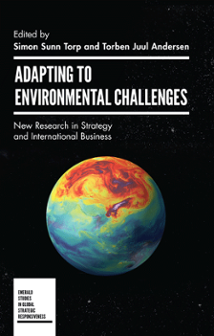
Index
Adapting to Environmental Challenges: New Research in Strategy and International Business
ISBN: 978-1-83982-477-7, eISBN: 978-1-83982-476-0
Publication date: 21 July 2020
Citation
(2020), "Index", Andersen, T.J. and Torp, S.S. (Ed.) Adapting to Environmental Challenges: New Research in Strategy and International Business (Emerald Studies in Global Strategic Responsiveness), Emerald Publishing Limited, Leeds, pp. 229-236. https://doi.org/10.1108/978-1-83982-476-020200011
Publisher
:Emerald Publishing Limited
Copyright © 2020 Emerald Publishing Limited
INDEX
- Prelims
- Chapter 1: Managing in Dynamic, Complex and Unpredictable Business Contexts
- Chapter 2: Nothing Endures but Change: Studying Changes in Industry Choice and Determinism
- Chapter 3: Fostering Strategic Responsiveness: The Role of Middle Manager Involvement and Strategic Planning
- Chapter 4: The Influence of Autonomous Strategy-making and Interactive Controls on Adaptive Corporate Performance
- Chapter 5: Corruption and Adaptive Responses: The Case of Institutionalized Deviant Practices in Corporations
- Chapter 6: The Importance of Firm Size and Development Strategies for CSR Formalisation
- Chapter 7: Who Is the Fairest of Them All? Firm and Institutional Determinants of Value Creation Related to CSR Information Disclosure
- Chapter 8: On How to Leverage Green Technologies for Sustainability Performance in the Tourism Sector
- Chapter 9: The Need for a Phenomenological Perspective in International Business Studies: Different Philosophies of Science and Their Consequences
- Chapter 10: How Resource-poor Firms Survive and Thrive: The Story of Successful Chinese Multinationals
- Index